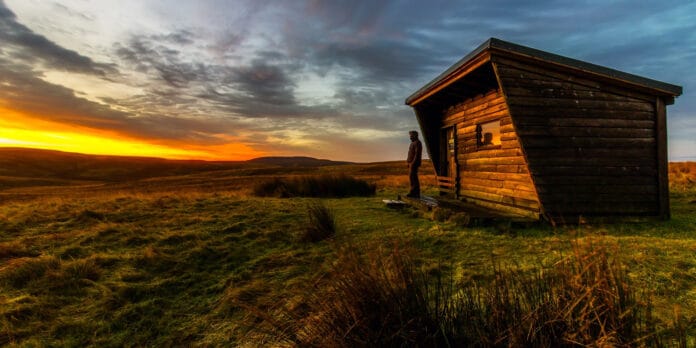Table of Contents
Solar power for a tiny house is an eco-conscious dream. More and more people are drawn to solar-powered tiny homes because of their smaller carbon footprint. If you’re downgrading on space, you will likely be keen to save energy and slash your bills.
If you’ve been contemplating gearing up your tiny home with renewable energy from the sun, look no further. This guide will help you weigh up some of the pros and cons of solar panels for a tiny house. We’ll also detail a simple solution to the problems you might encounter with traditional solar systems.
We’ll take a look at each one by one to give you a bit more insight into this fantastic renewable energy source for small spaces.
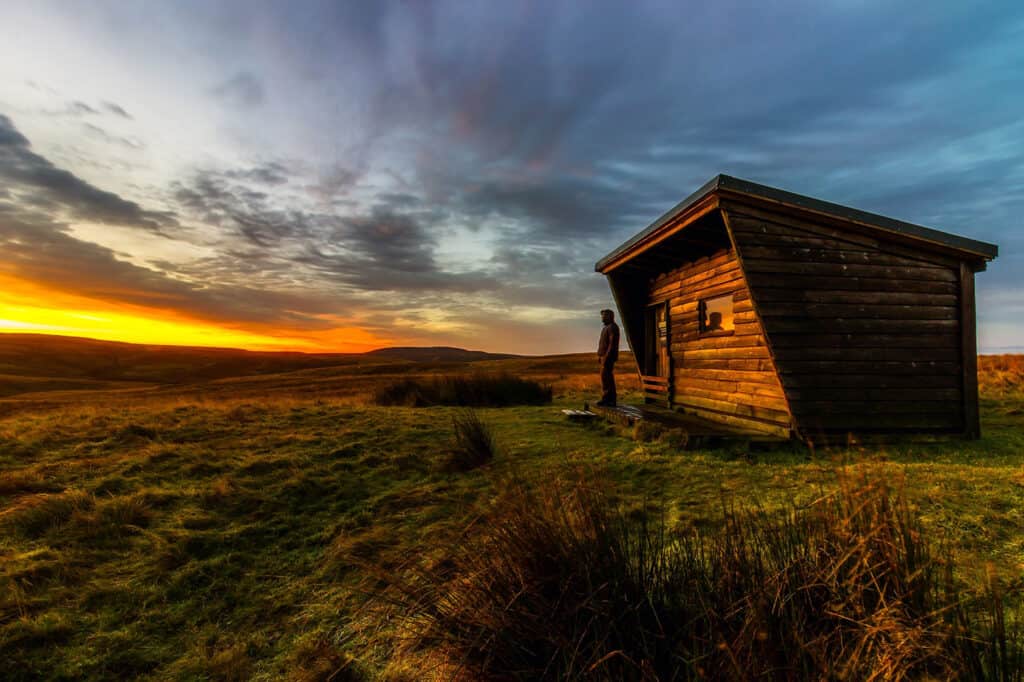
Pros of installing a Solar Kit for a Tiny House
Use Clean, Green Energy
The great thing about solar panels is their ability to exchange the sun’s energy for ready-to-use electricity. Allow solar panels to soak up the sun during the day, and by using solar batteries in tandem, you can store excess energy for the evening or whenever there’s a cloudy day or a power cut.
Take the EcoFlow power kit as an example. These cleverly designed power kits allow you to collect, generate and consume solar energy on a small scale that’s simple to set up. With a choice of battery capacities between 2kWh – 15kWh, you can safely store your required solar electricity for whenever it’s needed.
A Solar Power System Can Save You Money on your Bills
It’s a bit of a no-brainer that downsizing a home usually allows you to save money on electricity bills, so the progression to using solar panels for a tiny house is only natural.
A solar kit can cover your bills either partially or completely, depending on the wattage of your panels and the storage capacity of the batteries.
A Solar Kit for a Tiny House Gives You a Great Return on Investment
Purchasing a solar system for a tiny house upfront is an excellent investment. You’ll be able to save hundreds on your electricity bills annually. As a result, a solar system will pay off in no time.
Get Tax Incentives for Doing your Bit
If you have installed solar panels for your tiny house or plan on doing so, you may be able to get some tax incentives from the Government. This depends on where you live and when they’ve been installed. For instance, in the U.S., you could get up to 26% in Investment Tax Credits (ITC).
Independence from the Main Grid
Having a small solar power system means you can live off the local grid. Animal interactions, extreme weather and power cuts all affect the main grid and, in turn disturb your comfort and conveniences. By opting for a Power Kit, including solar panels and batteries for a tiny house, you’ll be safeguarding your home power from any interferences associated with the main grid.
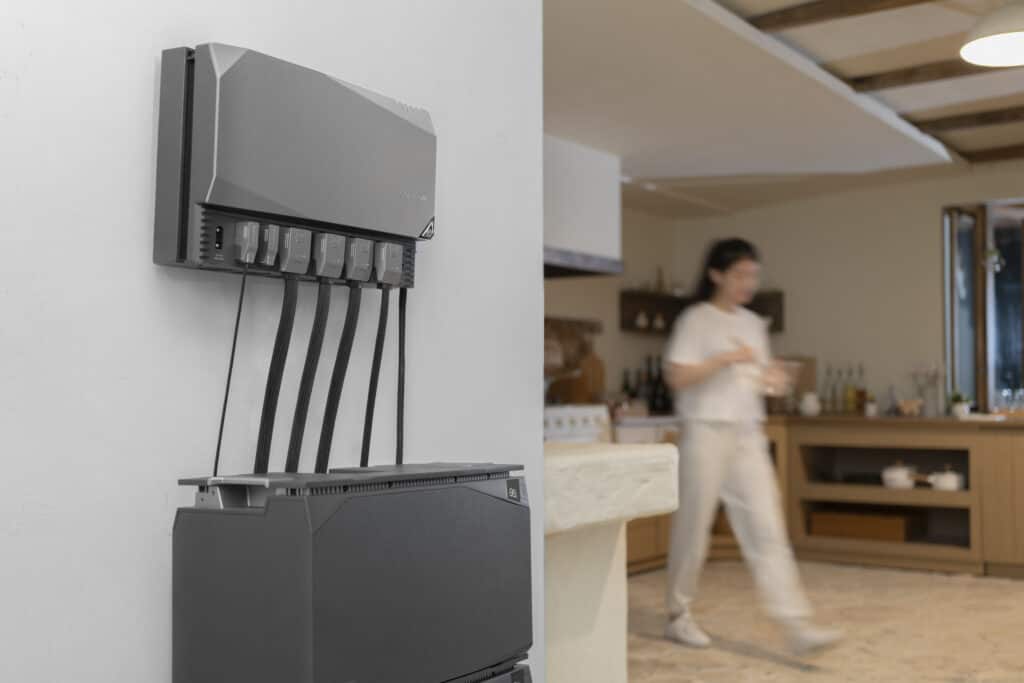
Tailor a Solar Set-up to Your Needs
Solar kits come in a range of shapes, sizes and components. If you’re keen on getting a fuss-free solar kit for your tiny house, then an EcoFlow Power Kit is an ideal solution for you.
How, so you say? An EcoFlow power kit is a world-first compact modular off-grid power hub comprised of several components. The power kits are available in 3 different configurations to suit each individual home – the Get Set Kit, the Prepared Kit, and the Independence Kit. These can all be customized and expanded to accommodate the required energy usage. Plug in most residential solar panels or EcoFlow portable solar panels.
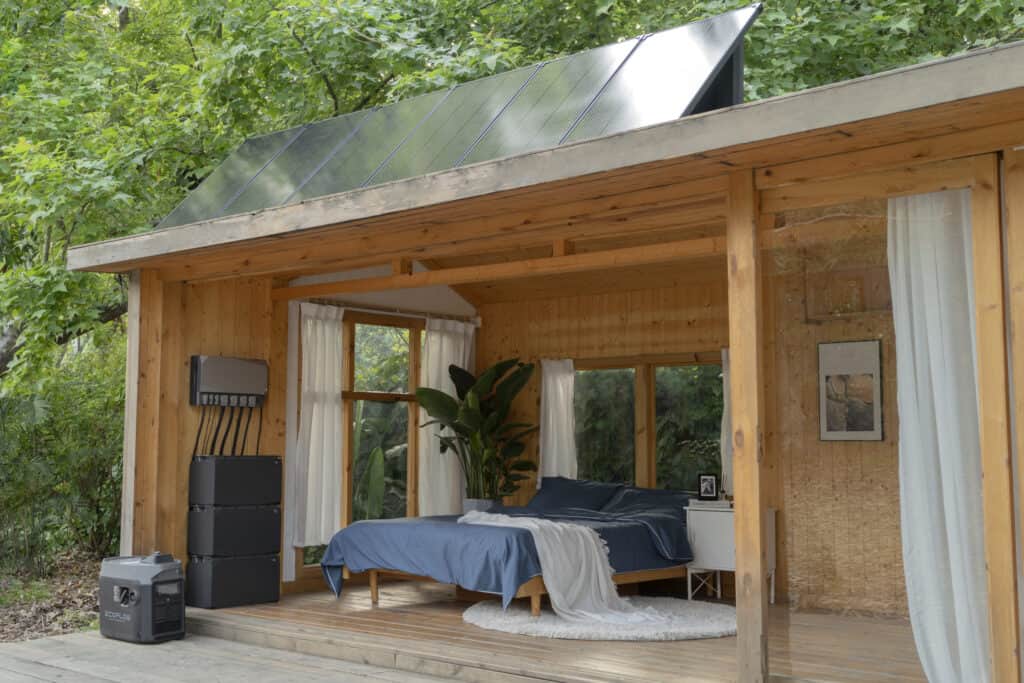
Cons of Solar Panels for a Tiny House
Calculating How Much Solar Energy is Needed to Charge a Tiny House
Math can be a drain, or it can enthrall you to no end. Either way, you’re going to have to do the calculations to work out how many solar panels you need to run a tiny house. Don’t worry, though. It’s pretty simple. Just grab a pen and notebook and follow the calculation below.
To work out how much solar power you need to run a tiny house, you’ll need to calculate how much power your appliances use each day. This requires you to find out the watt-hour usage for each one. To calculate, multiply watts by the hours of usage:
Wh = (W x Hrs)
For example, if you leave a 100w lightbulb switched on for 3 hours each day, your total power usage for that appliance would be 300Wh per day.
By totaling up the watt-hours for all of your appliances per day, you can get a good average of how many solar panels you need to run your tiny house.
For instance, a 400W solar panel soaking up the sunlight for 5 hours (400 x 5 = 2000) would generate 2,000Wh of charge for your appliances each day.
It might take you a little while to get a broad scope of your energy usage, but we promise it’ll be worth it!
Solar Panels Can be Too Large for a Tiny House
What doesn’t come as a surprise is that tiny houses come with tiny roofs. This means there can be limited space to mount panels.
The more power you need, the more wattage you will require in your solar panels. For this reason, it’s best to purchase solar panels with a higher wattage capacity or ones that you can unpack, unfold and place on the ground.
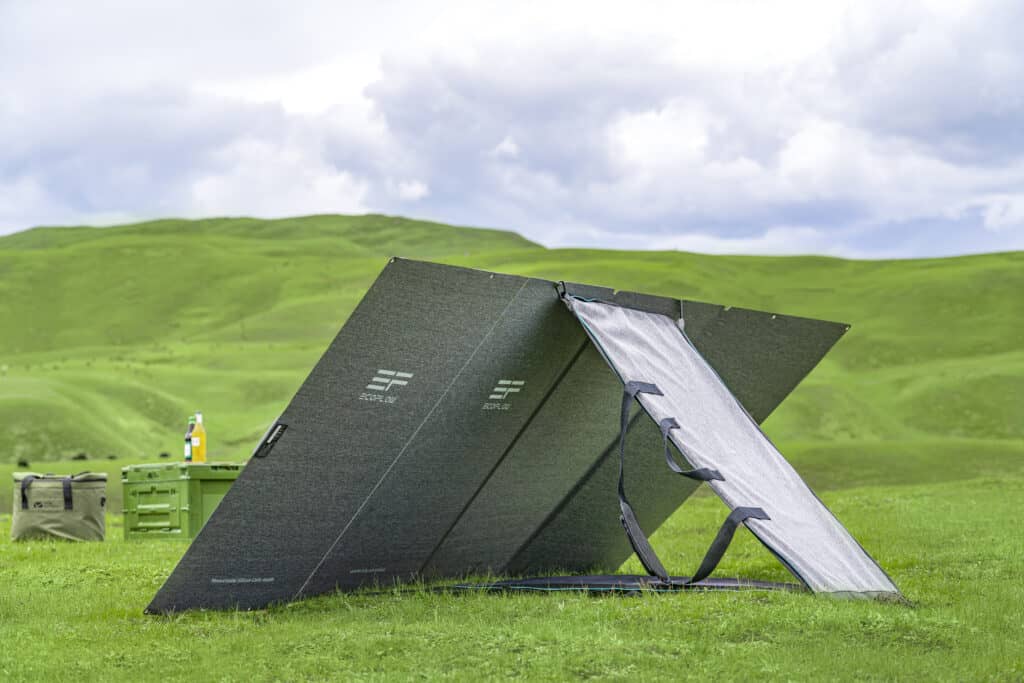
If your tiny house is on wheels, then portable solar panels may be a great option for you to choose. EcoFlow portable solar panels are packable, portable, and can be connected to any Power Kit to charge up a solar battery or two – gifting you with electricity that’s ready to be converted into power for your home.
Solar Inverter Can be Awkward to Place
A solar inverter is the heart of a solar kit. It turns DC power from solar panels into ready-to-use AC power for the home. A solar inverter comes in four different types – string inverter, string inverter plus DC power optimizers, microinverters, and hybrid inverters. Depending on which inverter you get, they must be stored in cooler temperatures away from direct sunlight and can produce a low humming sound. A solar inverter is usually placed outside in a box. Unless you have a microinverter, which is attached to each solar panel. The latter tends to be more costly and isn’t as popular with tiny house owners.
Too many options and not enough space?
A remarkable solution to this issue lies within the EcoFlow Power Hub. The Power Hub downsizes a traditional solar kit into a smaller package so it can easily be tucked away in a tiny home. It packs in two MPPT solar charge controllers, one battery charger with MPPT, one DC-DC step-down converter, and an inverter-charger.
With the Power Hub, you have fewer components to wire up than traditional kits and more space to enjoy. The Power Hub challenges expectations and supports 48V instead of the usual 12V seen in larger traditional systems.
To Weigh Up
So now that we’ve outlined a few pros and cons of solar panels for tiny houses, we know that the pros outweigh the cons.
Setting up a solar kit for your tiny house doesn’t have to be daunting. If an easy solar set-up that can be customized whenever needed is important to you without taking up much space, then the EcoFlow Power Kits remain a better bet than a traditional system.
The Power Kits help to easily bridge the gap between solar power and usable electricity for the home. And whether you plan on going completely off-grid or partially, you are doing your fair share to help the planet. And that really is a great feeling that’s hard to beat.
